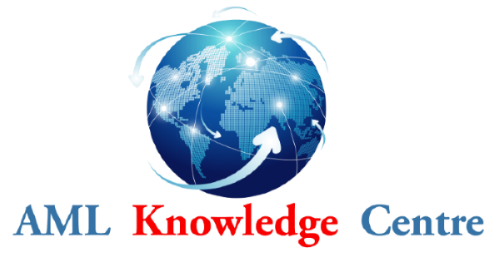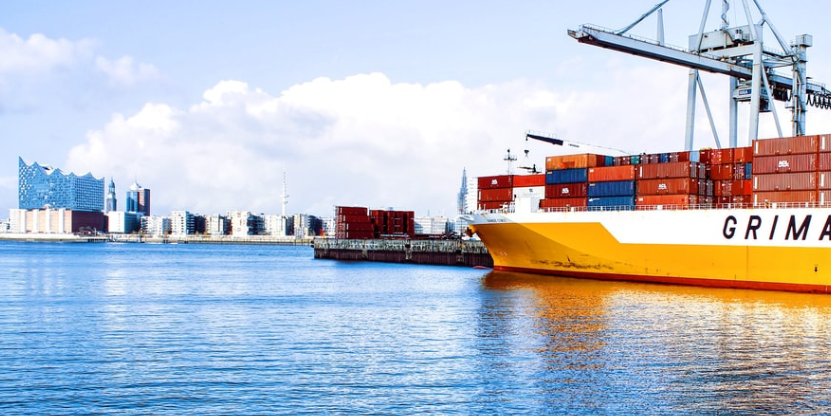With international trade valued at approximately US$ 16 trillion per annum, it provides ample scope for money laundering. According to the International Narcotics Control Strategy Report (INCSR) hundreds of billions of dollars are laundered annually by means of trade-based money laundering (TBML). It is one of the most sophisticated methods of cleaning dirty money. TBML red flags are among the hardest to detect. For example: what is the value of a dress? Is it $3? Or $30? Or $300? This simple uncertainty creates an environment that’s rife for abuse. TBML accounts for hundreds of billions of dollars of illegal money flows annually. According to a PWC report published in January 2015, 80 percent of illicit financial flows from developing countries are accomplished through trade-based money laundering.
Commonly used TBML techniques include over or under-invoicing and multiple invoicing, all of which facilitate money laundering through the creation of artificial profits or losses. Honest exporters and importers can be unknowingly caught up in such schemes:
- Over-invoicing. Company X ships 10 cars with a market value of $10,000 each to Company Y, but invoices Company Y $20,000 per vehicle. Company Y has an apparently legitimate reason to transfer $200,000 to Company X, half of which is “dirty money” to be laundered. Company X thereby profits from the $100,000 excess over market value, which represents the proceeds from criminal activity, but is now “clean”. Company X could even apply for tax incentives when exporting certain categories of goods, and it can evade capital controls by placing the excess funds in an offshore account
- Under-invoicing. In this scenario Company X ships 10 cars with a market value of $10,000 each to Company Y, but invoices Company Y for just $5,000 per vehicle. Company Y transfers $50,000 to Company X, then sells the cars to a dealer for $100,000. In this way Company X can transfer $50,000 of dirty money to Company Y. If asked, both companies can plausibly argue that the transaction was legitimate. A more likely scenario, however, is for the two companies to limit the under-invoicing to a margin of 10% or less, making it even more difficult to prove that the transaction was designed to conceal money laundering.
- Multiple invoicing. Money launderers may instead invoice the same shipment of goods more than once. In order to obscure the true nature of this scheme, organizations will employ multiple financial institutions to assist in financing. The price specified for the goods or services does not have to be manipulated and it is not uncommon to issue multiple payments in legitimate transactions due to amendments and corrections, making this hard to detect.
An alternative is to over or under-ship the goods themselves:
- This is similar to over and under-invoicing in that value is transferred to either the buyer or the seller. In this case, however, the parties misrepresent the quantity rather than the price. Company X charges Company Y $5 million, which reflects the value of the goods on paper. Company X then proceeds to ship $10 million worth of product, so Company Y receives an additional $5 million worth of goods.
- Over-shipment can also be used to avoid import duties.
- In some extreme cases of under-shipment, also known as phantom shipment, the seller will ship nothing at all – just an empty container backed by documentation that appears to be fully in order.
A further common technique is the fraudulent description of exported goods:
- Exporters can falsely describe the goods or services being transferred, either inflating or deflating their true value in order to pay off or get paid off. This TBML scheme works best with “invisible” services such as financial or legal advice, management consultancy marketing research etc.
- Alternatively, low-grade or even scrap material can be valued at an inflated price and fraudulently sold as high-grade or premium material.
- This form of money laundering may also be used in conjunction with other criminal activity, such as shipping proscribed goods such as ivory or endangered woods on CITES lists or claiming to ship goods that are eligible for tax incentives or subsidies.
Trade diversion is a common way of moving goods between high-cost and low-cost (or “developing”) economies, taking advantage of price differentiation between markets.
- Company X sells expensive pharmaceutical goods at low costs from a European Union country (e.g. the UK or Ireland) to Company Y in a poor African country.
- Company Y sells the same pharmaceuticals back to Ireland at (or close to) Irish market pricing.
Red flags
Most TBML involves more than one of the methods listed above (and possibly others) and more than one organization, in more than one jurisdiction. This makes it exceptionally difficult for financial institutions and regulatory authorities to identify red flags. The Financial Action Task Force lists the following red flags that financial institutions should look out for and investigate:
- Discrepancies between the description of the good or service and the invoice
- Discrepancies between the description of the good or service and the actual good or service
- Discrepancies between the reported value and the fair market value
- When the underlying good or service varies significantly from the exporter or importer’s typical shipment
- When the size of the shipment varies significantly from the exporter or importer’s typical shipment
- When the good or service is designated as “high risk”
- When the jurisdiction is designated as “high risk”
- When multiple jurisdictions are involved for no economic reason
- When the transaction involves shell companies
Red flag checks also target the illicit shipment of dual-use goods – goods that can be used for both innocent purposes, as well as sinister ones. These could include chemicals for making illegal drugs, or that could be used for both civilian and military purposes. Ammonium nitrate, for instance, is used as a fertilizer but can also be used in explosives. In this case, understanding the context of the shipment, and knowing the organizations involved is key.
What should banks do?
Regulatory bodies around the world are stepping up scrutiny of TBML and banks are increasingly obliged to take more stringent action to ensure they are not unwittingly facilitating illicit transactions. The Monetary Authority of Singapore (MAS), the Hong Kong Monetary Authority (HKMA) have taken the lead in issuing guidelines and red flag checks around trade finance, based on advice from the International Chamber of Commerce (ICC), Bankers Association for Finance and Trade (BAFT) and FATF. These red flag checks define the key attributes in trade finance transactions that indicate a high risk for TBML and are now seen as the global standard for due diligence for which financial institutions must screen and monitor.
In particular, banks have a duty of care to identify where goods are being shipped, what transportation is used and whether goods can potentially be used for dual purposes. However, this is not just a duty for banks; companies involved in exporting and importing must exercise due diligence to ensure that they are not (wittingly or unwittingly) involved in suspicious trade activity.
As is the case with other forms of money laundering, failure to comply will not only result in huge fines, but also significant reputational damage. Regulatory enforcement actions often feature specific language indicating that banks aided and abetted terrorism, drug trafficking, and human trafficking by failing to detect and report illicit activity, upon which media outlets can be quick to capitalize.
Sanctions screening
Compliance with government sanctions lists naturally forms a substantial part of the checks for trade finance that banks are required to make. Red flag guidelines require banks to keep a sharp eye out for customers conducting business in, or shipping items through, high-risk states, or customers engaging in potentially high-risk activities, including the arms trade or the export of dual-use goods. Banks must verify all counterparties (corporations and banks) as part of Know Your Customer (KYC) regulations and ensure that all parties to a transaction undergo “sanctions screening” against official sanctions lists, including those from the Office of Foreign Assets Control (OFAC), the European Union (EU), and the United Nations (UN).
Why is compliance so difficult?
However, such compliance is no mean feat because, as we have seen, there are many TBML techniques, which can be used in many combinations. Moreover, whereas legitimate international trade assumes that there is only an advising bank and an issuing bank, acting on behalf of both the importer and the exporter, the reality of letter of credit (LC) processing, could be far more complicated with many additional parties involved: one or more reimbursing banks, as well as the banks of intermediaries, advisors, shipping and insurance agents, vessels, forwarding agents, consignees, notifying parties … the list is virtually endless. Multiple financial institutions and agents, multiple ways to move the goods, etc., all add complexity upon complexity for the purpose of monitoring for money laundering.
Thus, even though all of the TBML techniques listed above are well known to investigators, there is no easy way to identify this form of money laundering activity, at least not using traditional methods. The data that is required to identify suspicious activity typically resides in multiple sources, over which the individual investigator at a bank or regulatory authority has limited visibility. Moreover, as is the case with all forms of anti-money laundering investigation and sanctions list monitoring, TBML throws up a large number of false positives, which reduce both the investigator’s productivity and the likelihood that he will spot a true positive.
Barriers to data integration
The principal reason for the high rate of false positives is that the source data being used has not been subjected to data normalization or data cleansing, and it resides in various legacy systems that are not integrated and not shared by the various financial institutions involved. Typically, there is no link between letter of credit data and associated data and a financial institution’s watch list. Consequently, most investigations are largely manual and carried out by individual investigators in individual banks. There is a complete lack of transparency and visibility.
With multiple document formats and data sources to monitor, banks are increasingly looking to artificial intelligence technologies such as natural language processing (NLP) to meet their TBML compliance obligations. To this end, unstructured data from the various paper-based trade documents must first be scanned and put into machine-readable text format. Once the data is in a format that can be processed and analyzed, NLP can be used in combination with a rules-based engine to interpret the text, understand the context and draw conclusions from it to identify red flag indicators as well as true beneficial owners on sanctions lists.
By harnessing the capabilities of such technologies, banks will be able to go monitor and detect money laundering activities more rapidly and efficiently than in the past, throwing up fewer false positives without the burden of having to employ large numbers of investigators to tackle difficult compliance checks manually. Human investigators will, instead, be able to focus on following up genuinely suspicious activity.
While TBML remains widespread, red flag guidelines and watch lists will continue to evolve and grow. It is only through flexible, intelligent, automated AI-powered solutions that banks can keep up with and adapt to heightened regulation required to tackle this growing international crime.
That said, AI is not in itself a “silver bullet” and the process of getting them up and running can be laborious if undertaken by individual financial institutions. Models and algorithms need to be constructed, systems set up and then trained and tested. This will involve expert investigators working with data scientists to set up suspicious activity scenarios based on all the key fields involved in a trade transaction. Banks should therefore look to cloud-based multi-tenant solutions that share out the cost burden.
When the system detects a potential red flag based on the pre-programmed scenarios, an alert will be generated, giving the investigator immediate access to the specific transaction. Investigators will then need the ability to rapidly find transactions that exhibit similar characteristics.
Other technological advances, such as distributed ledger (e.g. blockchain) technology, will help to improve banks’ ability to monitor complex, multi-part transactions.
Nonetheless, greater international cooperation is vitally important. Progress in combatting TBML will be greatly accelerated if regulators across jurisdictions can formulate agreements for better information sharing and improve the harmonization of data that is scattered across multiple systems, borders and financial institutions.
For more articles join the AML Knowledge Centre at https://www.linkedin.com/groups/8196279/
Paul Allen Hamilton and Volha Miniuk



